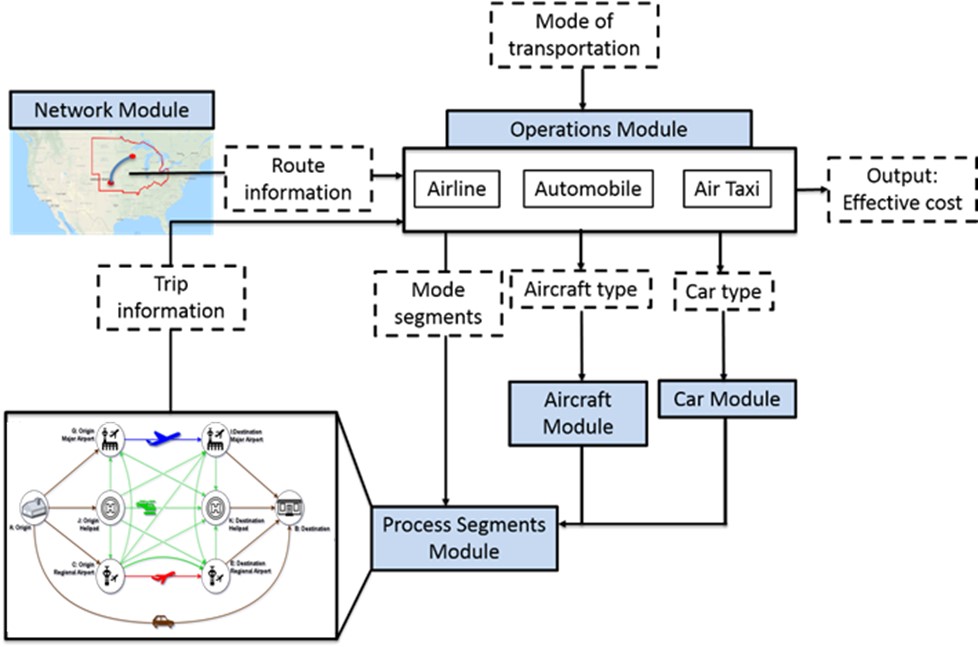|
Note: Unless otherwise noted, project Principal Investigator (PI) is Dr. DeLaurentis.
|
High Speed Flight Systems & Defense Cluster
|
|
Hypersonics Advanced Manufacturing Technology Center (HAMTC)
Sponsor: The Office of the Secretary of Defense Manufacturing Technology (OSD ManTech)
Synopsis: The team uses the SoS and physics-based tools to confirm the effectiveness of the thermal protection system design for hypersonic vehicles.a
|
|
Design, Build, Test, and Fly (DBTF) Time Reduction
Sponsor: Stratolaunch
Co-Investigator: Dr. Leifur Leifsson (AAE)
Synopsis: The team optimizes/minimizes the cycle time for the Design, Build, Test, and Fly (DBTF) process by using the SoS tools.
|
|
Multidisciplinary Hypersonic Program: Enabling Technologies for High-Speed Operable Systems
Sponsor: Air Force Research Lab (AFRL)
Co-Investigator: Air Force Research Lab (AFRL)
Synopsis: The research includes developing and demonstrating a system-of-systems tool conglomerate to optimize complex design problems for hypersonic vehicles, which are subject to severe size, weight, and power sensitivities. In particular, we focus on the aerodynamics tool, trajectory simulation tool, ablation modeling tool, and optimization tool.
|
|
Wolfpack
Sponsor: University Consortium for Applied Hypersonics (UCAH)
Co-investigators: Dr. Shreyas Sundaram (ECE)
Synopsis: The team applies optimal trajectory generation techniques and the SoS AWB tool suite to hypersonic vehicle missions, allowing multiple hypersonic and conventional vehicles to complete preemptive strike and defensive missions.
|
Advanced Aerial Mobility & Air Transportation Cluster
|
|
Operations limits for passenger-carrying Urban Air Mobility missions
Principal-investigators: Dr. Daniel DeLaurentis, Dr. William Crossley
Sponsor: National Institute of Aerospace, NASA Langley Research Center
Synopsis: The convergence of new technologies, such as electric propulsion, autonomy, and new business models, such as app-based ride sharing, are generating the potential for a new aviation market known as Urban Air Mobility (UAM) to emerge. It is envisioned that UAM may revolutionize mobility within metropolitan areas by enabling a safe, efficient, convenient, affordable, and accessible air transportation system for passengers and cargo. Such an air transportation system could bring aviation into people’s daily lives and provide an augmentation and/or alternative to other ground-based transit modes, such as cars. The UAM market is not likely to appear overnight. Rather, some form of evolutionary approach based on the pace of technology development, infrastructure limitations, societal acceptance, airspace integration, and many other factors may bring us from the current state of the art to the envisioned future state where aviation is a normal part of people’s daily lives. To help NASA’s Aeronautics Research Mission Directorate (ARMD) consider potential near-term applications for passenger-carrying UAM and which issues will be the key “bottlenecks” limiting the scalability of early UAM operations, this task is focused on studying the “operational limits” of near-term UAM applications. The work builds upon previous methodology developments of the Purdue PIs to assess the mobility benefits from CTOL and VTOL operations, at a regional transportation level and with initial “hooks” into urban areas.
|
|

|
|
Secure and Safe Assured Autonomy (S2A2)
Sponsor:NASA University Leadership Initiative
Synopsis: The recent introduction of unmanned systems into the NAS will bring challenges and opportunities for the nation’s aviation system. The integration of such a complex transportation system creates a clear need to develop new technologies and innovative operational concepts for secure and safe assured autonomy. An unmanned systems future will see the integration of a wide variety of Unmanned Aerial Systems (UAS), personal air vehicles, Urban Air Mobility (UAM) vehicles, and cargo and special mission aircraft into the NAS. These developments can leverage UAS Traffic Management (UTM) advancements for the unique requirements of UAM airspace management. The main challenges include: (i) sensing and understanding complex operational surroundings, coordinating different types of aerial vehicles, planning and navigation through highly dynamic and uncertain environments; (ii) securing the NAS against a wide range of malicious adversarial threats, specifically cyber-physical attacks; (iii) verifying and validating autonomous system operation; and, finally, (iv) properly integrating new vehicles and traffic management approaches in the midst of autonomy. Our primary goal is to ensure safe, secure and robust integration of autonomous vehicles into a UAM-tailored transportation infrastructure while maintaining compliance with existing commercial and civil air transportation safety standards.
|
Space Systems Cluster
|
|
Studies of Disruption in Space Technologies
Sponsor: Lockheed Martin Space
Synopsis: The purpose of this activity is to produce scoping information that could define a plan of multidisciplinary research required to achieve disruptive capabilities in space-based quantum communication.
|
System of Systems /Systems Engineering Methodology Cluster
|
|
Production Engineering Education and Research (PEER)
Principal-investigators: Dr. Audeen Fentiman (Engineer Education)
Co-investigators: Dr. Kerrie Douglas (Engineering Education), Dr. Jorge Camba (Purdue polytechnic institute), Dr. John Sutherland (Environmental and Ecological Engineering),Dr. Daniel DeLaurentis
Sponsor: NSF EHR Core Research, Boeing
Synopsis: Production Engineering Education and Research (PEER) aims to accelerate training in critical skill areas for the Nation's engineering and advanced manufacturing workforce. The project at Purdue focuses on the development of online modular courses on MBSE for working professionals, 4-year, and 2-year university students. It is a joint project with faculties of Engineering Education, Environmental and Ecological Engineering, Purdue Polytechnic Institute, College of Education, Purdue Online.
|
|
Mission Engineering-based Integrated Acquisition Portfolio Review (IAPR) Decision-Support Tool
Sponsor: Department of Defense (DoD) via AIRC
Co-investigators: Dr. Jitesh Panchal (ME)
Synopsis: The team adapts the SoS AWB to create decision-support prototype tools for the Integrated Acquisition Portfolio Reviews (IAPRs) and demonstrates the capability using an anti-surface warfare (ASuW) mission thread.
|

